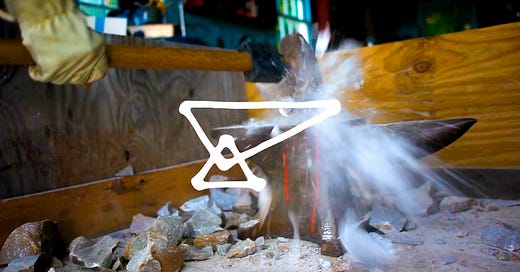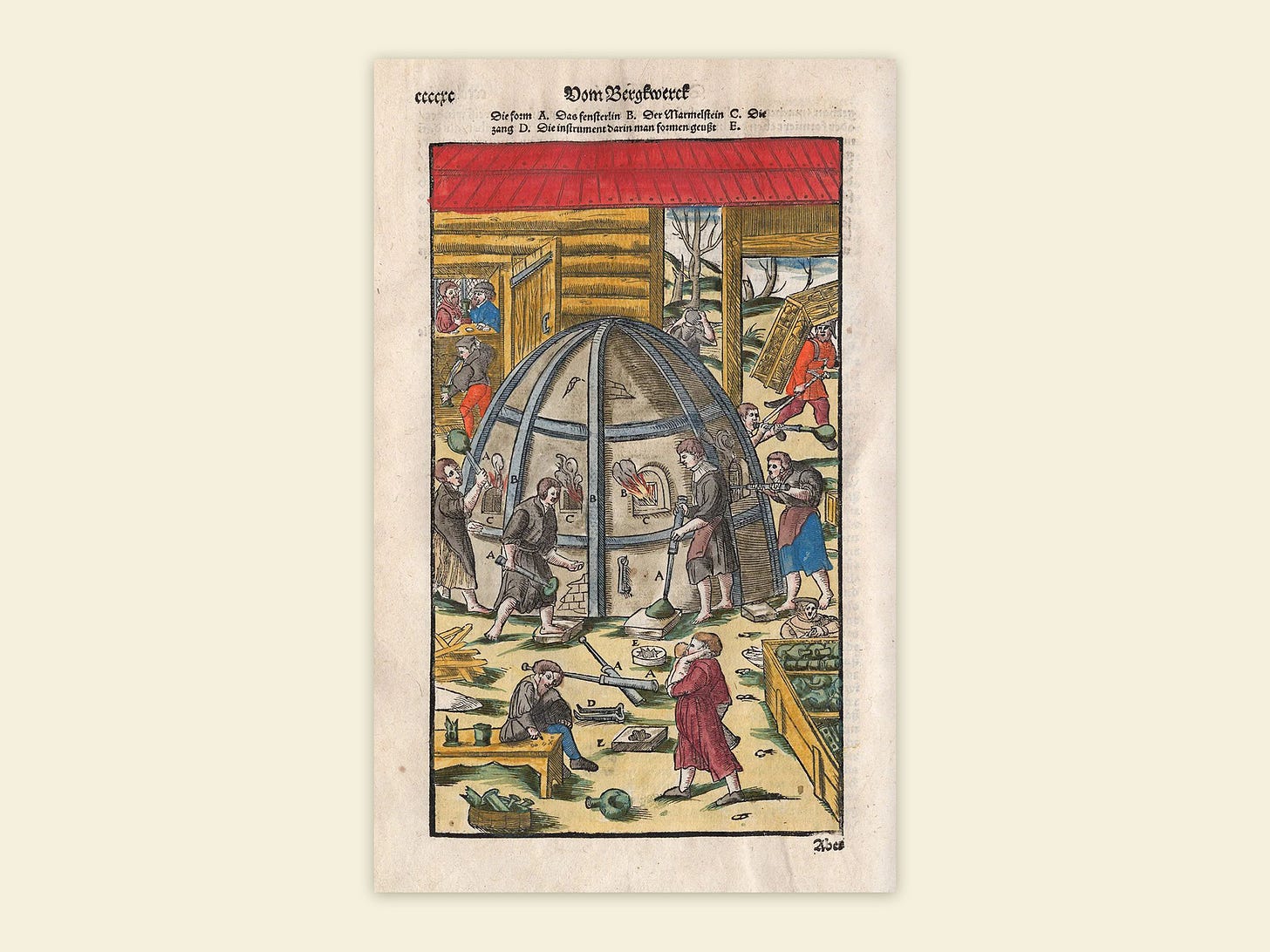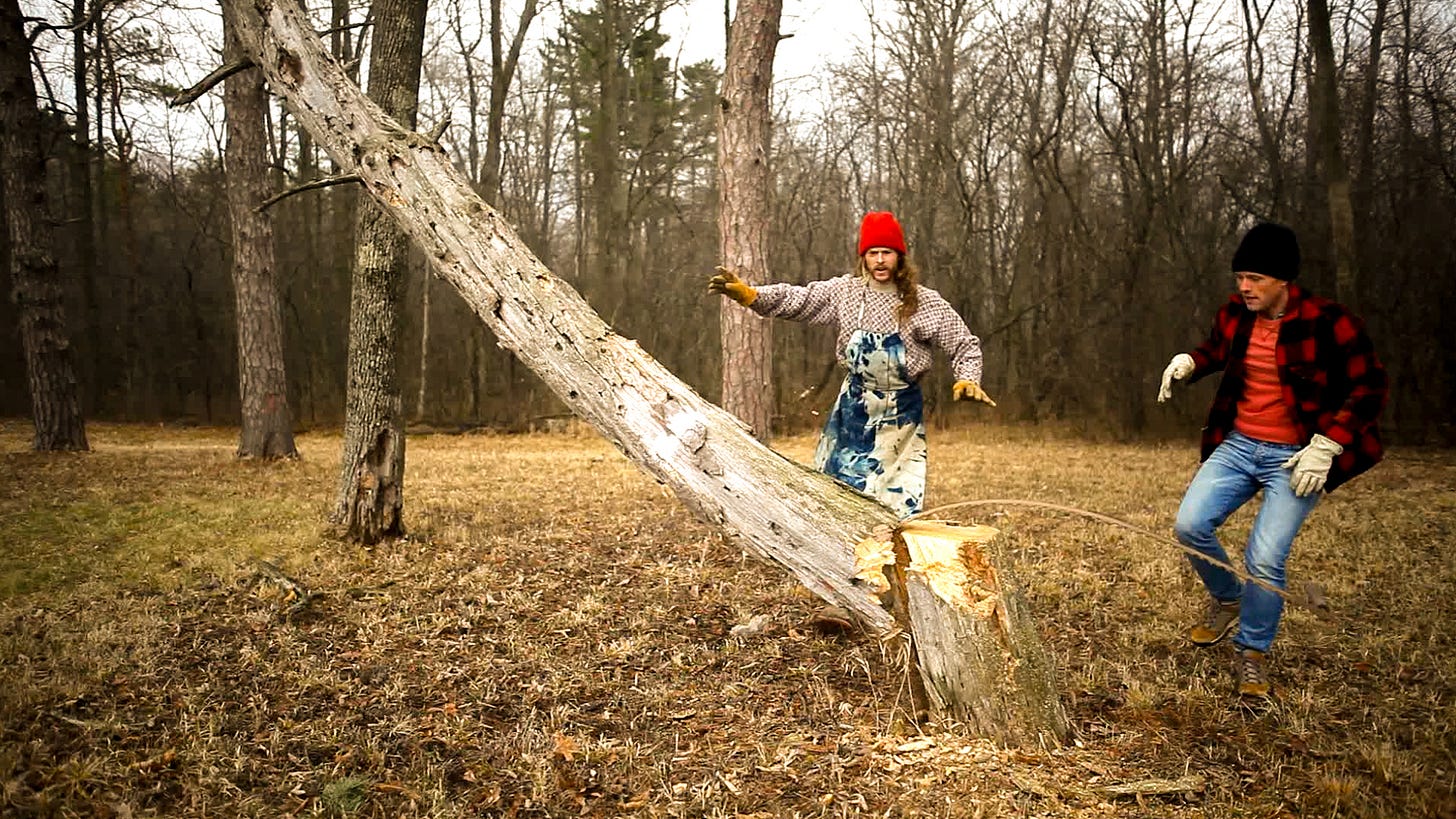Welcome to this eleventh reflection on In Fragments — this week exploring Apprenticeship, a ritual to source and prepare the ingredients to make local glass completely from scratch. You can view it here:
What is power and where does it come from? We often think of power as something to be avoided: something nefarious, something corrupt. Yet all beings in nature seek power: the flower grows petals to attract the necessary pollinators; the river cuts its way through the rocky canyon; the blade of grass reaches up to the sun. The word “power” is derived from the Latin root, “potere,” which simply means “to be able.” Power is our ability to express our desires in life — to “be able” to shape the world around us through the conscious application of our will.
It may be helpful to distinguish between two kinds of power: external (socio-political/economic) power, and internal (psycho-spiritual/creative) power. External power is about manipulating other people, while internal power is about shaping yourself. External power seeks fame, money, status, physical objects, and political influence, while internal power seeks inspiration, imagination, self-mastery, and the sculpting of belief.
My understanding of this topic was greatly expanded by José Stevens of The Power Path, with whom I was grateful to study last year, as part of a cohort of apprentice-like students. For hundreds of years, this notion of “apprenticeship” was central to Western society through the system of “masters and guilds” — a political framework that carefully married creative (internal) power with economic (external) power.
Through the classic “apprenticeship” program, aspiring young artisans lived and worked with “master craftsmen” in exchange for education, lodging, and food. After seven years of indentured work, apprentices became “journeymen,” free to work with other masters in exchange for daily payment. Eventually, journeymen created a “masterpiece” — a major piece of work to demonstrate mastery over their craft. If approved by the other masters, the journeyman was welcomed into the guild as a master — granting him the legal authority to open a business and take on apprentices.
Apprenticeship was essentially a process of gathering power — the creative power of mastery over a particular craft, and the economic power of channeling that mastery into a business. This alliance of creative and economic power governed Western culture throughout the Middle Ages, until capitalism disrupted its reign.
Capitalists were those with economic power (money), if not creative power (mastery). They invested in the so-called “cottage industries” — the rural networks of artisans who eschewed the traditional apprenticeship system by moving to the countryside beyond the jurisdiction of the guilds. Propelled by an influx of capital and the frothy rhetoric of “free trade,” the cottage industries soon eclipsed the guilds, which by the late 1800s had been mostly dissolved — marking a turning point in Western culture: the divorce between economic and creative power.
If creative power (mastery over a craft) requires intimacy with materials, then perhaps economic power (capital divorced from craft) invites exploitation of those same materials. Indeed, if you’ve ever talked with a woodworker or stonemason, you’ve heard the reverential, almost sacred, way in which they speak about wood and stone. On the other hand, if you talk to a banker about those same materials, you might hear about “natural resources” and “tradable commodities” — casting the “products” of nature as items whose “value” is primarily economic, and certainly not sacred.
It is interesting to ponder: how might the divorce of economic and creative power be at the root of the ecological crises that surround us today? If we could rediscover our love of materials, could we rekindle our sense of sacred intimacy with the living earth — and therefore our ability to care for, respect, and protect it?
Here are four principles for the process of gathering creative power:
Proximity — Creative power is gained by being in the presence of that which is more powerful than you, whether human or otherwise. Much as trees absorb energy from the sun, you can absorb information, insight, and wisdom from experienced teachers and guides. You can also gain power from being in the presence of powerful nature, such as fires, oceans, wind storms, and medicinal “teaching” plants. Harrowing and dangerous experiences can also give you power, as in the truism: “that which doesn’t kill you makes you stronger.” In all of these approaches, the closer the better (i.e. power by osmosis).
Presence — The present moment is the source of all creative power, the place where intention intersects with attention. When you wander into the past or the future, you lose your ability to shape what happens next, which only ever exists in the present. Creative power is not so much something you have as something you receive — it happens not so much to you as through you. Like a surfer catching a wave, you need to be prepared for power’s arrival, as creative power comes and goes, and when you’re present, you can help to steer it.
Persistence — There is truth to the adage of 10,000 hours leading to “genius.” Or John Cage’s advice to “find a place you trust and try trusting it for a while” (first coined by Sister Corita Kent in her Rules for Students and Teachers). Or the philosophy that “in life there are only blessings and blessings in disguise.” Each of these truisms points to the radical doctrine of “trusting the process.” Along the way, life will present you with obstacles to test your commitment to gathering creative power. As the Zen teacher Seung Shan would often say: Only go straight! Only don’t know!
Precision — When gathering creative power for an application of Life Art, the more precise and personal the better. If you can use materials and metaphors that are endemic to your actual life situation, you’ll be uniquely positioned to leverage their power in service to your work. Remember that you are the center of your world (as everyone else is the center of theirs), and that what you are creating is your masterpiece: that which makes the most sense for you. What you are seeking is not external validation (economic power) but a sense of internal alignment (creative power).
In this eleventh ritual of In Fragments, I work with Ethan Bond-Watts for seven months to gather the necessary materials from around the State of Vermont to forge our own homemade glass completely from scratch — eventually building an eighteen-foot clay-cob furnace in a hillside at High Acres Farm (to be explored next week).
Through the arduous work of gathering and preparing these ingredients, I performed a kind of “apprenticeship” not only to the making of glass, but also to the process of becoming a Vermonter: embracing the physicality of my family’s land and my grandfather’s tools, in lieu of my familiar work with computers.
In Zen, the term “master” is sometimes simply defined as “one who started before.” I find this framing of mastery to be a relief, making us travelers on a similar path, helping to show one another the way.
How are you gathering your own creative power? Who are your teachers and guides? What practices help you stay present? To what processes do you feel committed? What materials are uniquely appropriate to you?
Hope you’re enjoying the work,
— Jonathan








Hey Jonathan. Did you know about the “glass delusion” mentioned first in the Middle Ages? That duplicity of ‘being there’ and ‘not being there’ Its sort of connected (at least in my mind), with the commodifying of life and its’ living. It’s like Banksy”s stencil of the battler feeding to a dog it’s own mutilated leg-bone... I was thinking the same about war and bureaucracy... as different rhythms of devastating violence. The vessel and the crop both move you, one is tiny going through you, the other one is not... (We are going to need a bigger boat).
thank you, Jonathan. Healing.